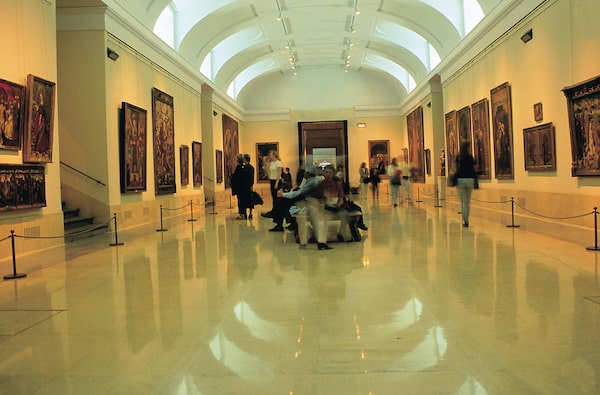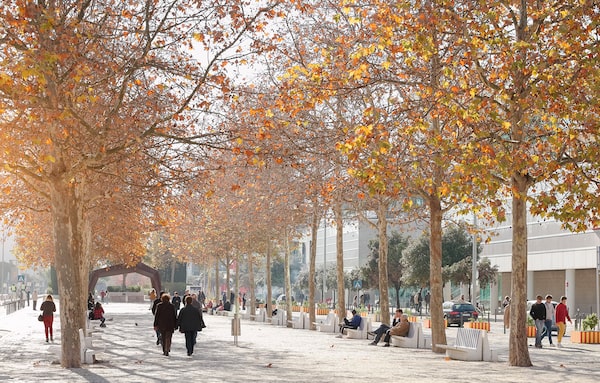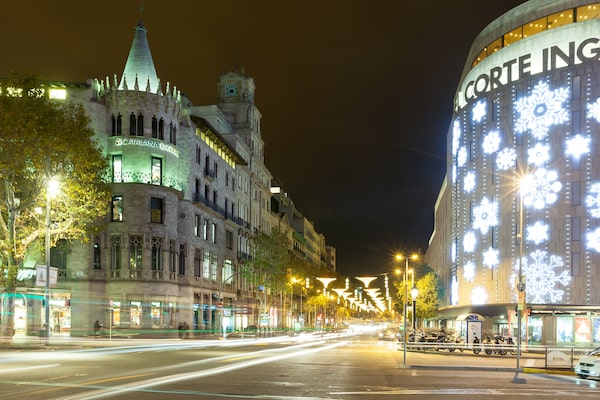
Lineups and crowds at the world-famous Prado Museum, located in central Madrid, thin out during the off-season, from October to March.The Tourism Institute of Spain
Off-season travel to Europe equals a prime-time getaway for savvy travellers.
Shift a trip to either side of peak tourism summer months – including the increasingly busy period from June to early October – and the payoff is hotel deals, comfortable temperatures and fewer crowds.
From October to March, days are shorter, and the weather may be better suited to enjoying a city on foot rather than lounging at patios. In Lisbon, where the sun shines 290 days a year, the thermometer rarely drops below 15 C. Madrid winter temperatures are around 10 C and spring comes early.
That contrasts with summer 2023, which seemed more like an endurance event than a vacation in some parts of Europe. There were packed sites and long lines at museums and attractions as visitors struggled to stay cool during punishing July and August heatwaves.
Target off-season times instead of months to get the best hotel deals, says Gloria Ros, media specialist at the Tourist Office of Spain in Toronto. Things can still be busy during shoulder seasons, the periods between peak and off-peak months. These dates also differ among destinations, depending on festivals and holidays, which can drive up prices and increase crowds even during off-peak tourism periods, so do your homework.
Athens, with fewer crowds, is so much more enjoyable and winter is hardly cold here, at least not compared to most parts of Canada.
— Victor Romagnoli, tour guide, Adventures Abroad
Off-season travel means packing layers or a jacket for evening strolls. Add an umbrella, too. Cobblestones can be slick with wet leaves and rain. But as writer and communications director Rachel Sa observes of her plan to visit Lisbon in February: “I may have to wear a windbreaker, but I’ll be wearing a windbreaker in Lisbon.”
Here are four destinations worth looking at for booking your off-season Europe getaway.
Athens
Ontario-born international tour guide Victor Romagnoli calls Athens his second home. He leads small-group trips all over the world for British Columbia-based Adventures Abroad and has lived in Greece since 2000, splitting his time between the island of Tinos and Athens. He says he can’t recommend visiting Athens highly enough, especially in winter.
Celebrated sites like the Parthenon and Acropolis Hill, which were closed to tourists in July for the hottest hours of the day during a scorching heat wave, are less crowded from mid-November to Greek Orthodox Easter, which falls on May 5 in 2024. Hotel rooms can be as much as half of high-season prices.
Athens is still lively, even during off-peak travel times, Romagnoli says, as many Greeks who work on the islands return to the city for winter. Restaurants serve dishes dictated by the Greeks’ passion for eating according to the seasons. White cabbage leaves replace stuffed grape leaves in dolmadakia. At the Central Market, stalls are piled high with wild mountain greens and foraged mushrooms.
“If you can possibly avoid summer and early fall, you will benefit greatly,” Romagnoli says. “Athens, with fewer crowds, is so much more enjoyable and winter is hardly cold here, at least not compared to most parts of Canada.”

Strolling Lisbon’s Parque das Nações, near the Tagus River, is pleasant during the fall and winter seasons, when the temperatures are cool, rarely dropping below 15 C.Tourismo de Portugal
Lisbon
Toronto-born Sa has a passion for off-season travel to her beloved Lisbon. She was there in October and plans another trip in February.
“I avoid the high season because it’s harder to wander around and feel a bit more like you belong because of the throngs of tourists,” says Sa, who has dual Portuguese-Canadian citizenship and calls herself a proud Luso-Canadian.
“I’m also a weather wuss, so July and August? No thank you,” she adds.
Visitors love the cheerful public-transit yellow trams to take in some of Lisbon’s most beautiful sites. In summer, good luck even getting on. In off-season, you may even get a seat.
The city’s cafés and street culture encourage unhurried wandering made even more enjoyable with fewer tourists. Drop into a bar to listen to traditional Portuguese music called fado, songs of melancholy performed by a singer and accompanied by various strings, sometimes described as the Portuguese version of the Blues.
Eat like a Lisboan and order comfort foods like bacalhau (cod) and cozido à portuguesa, a kind of pot-au-feu with sausages, meats and vegetables. Try to hang onto a massive bifana sandwich piled high with thin slices of wine-marinated pork in sauce. The rich smell of roasting chestnuts makes it hard to resist the wares sold by sidewalk vendors, while Sa says small restaurants specialize in huge portions and you’ll be well fed for about €10.
In early March, watch surfers take on churning Atlantic Ocean waves at Primavera Surf Fest along the white sand beaches on Costa da Caparica, about 10 kilometres from Lisbon.
“The thing with Lisbon is there is no bad time to visit,” says Sa.

A street in Barcelona near Plaza Cataluña. The city streets are enchanting during the holiday season with the glow of twinkling lights and festive decorations.The Tourism Institute of Spain
Barcelona
The coastal city on the Mediterranean Sea is home to Catalan architect and designer Antoni Gaudí and his masterwork, the Basilica de la Sagrada Familia. It seems every visitor wants to see Gaudí's famed church, then enjoy a stroll on the tree lined La Rambla.
Both sites draw masses of tourists to Barcelona during the hot and humid summer. The city has become an “it” destination and the numbers of visitors reflect its status.
That’s where off-season travel comes in. According to Ros, late spring and early fall offer the best combination of good weather, lighter crowds and longer days than winter and plenty of tourist and cultural activities in Barcelona.
Late fall and winter temperatures are around 15 C, gradually warming through spring. Comfortable weather makes it a good time to visit 19th-century city park Parc de la Ciutadella or the hedge maze at Parc del Laberint d’Horta, the oldest gardens in Barcelona.
While you won’t have Sagrada Familia to yourself, lineups are shorter at Spain’s most-visited landmark from November to February.
One of the city’s musical stalwarts, the annual Voll-Damm Barcelona International Jazz Festival runs each fall through December, featuring an international slate of musicians performing in venues around the city.
And shoppers rejoice. Sales season starts in January in Barcelona and the rest of Spain; bargains can last until the end of March.
Madrid
Off-season travel brings cooler temperatures to Madrid and a delicious way to counter the chill: a plate of freshly fried churros served with a cup of thick, rich hot chocolate for dipping.
A trip to Madrid in mid-November showed it was still busy with international tourists, so the period post-Christmas to pre-Easter is the best time to get hotel deals and have some elbow room in the Spanish capital.
December to April are the rainiest months in Madrid and since a visit to the Museo del Prado is a must-do, it’s a good choice for a wet day. Consider booking a guided tour for the best experience and see highlights of the massive collection of works by artists, including Titian, El Greco, Rubens and Goya.
La Candelaria (Candlemas) is celebrated across Spain on Feb. 2. The Christian celebration dates back to the 8th century and in pagan mythology, the day marked the midpoint of winter. Madrid pulls out all the stops, with pageantry and parades, including clowns dressed as Andalusian farmers in mock fights with wooden-frame bulls.
A week later, Madrid celebrates Carnival from Feb. 10 to 14 with a variety of free events and a parade with costumed revellers.
As the sun sets, take part in the Madrid tradition of la hora del vermut. The vermouth hour is technically before lunch, where a glass of botanical-rich white or red vermouth is often on tap in bars and restaurants. It’s now popular before dinner, which is typically served at about 10 p.m. in city restaurants.
Take a seat at La Hora Del Vermut in the busy Mercardo de San Miguel food hall and try one of the 80 vermouths on the menu, plus four on tap. And get some olive-cheese-anchovy skewers from the stall next door for a tapas accompaniment.
Turns out buttery-salty Spanish Manzanilla olives pair beautifully with vermouth, as anyone from Madrid will tell you, no matter what the season.